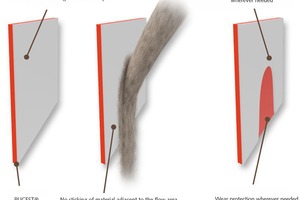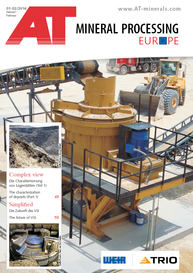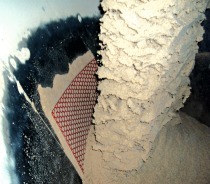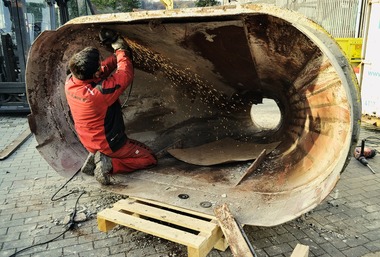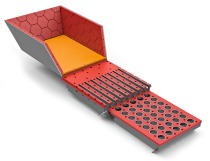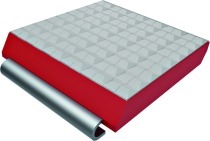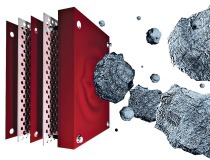PUCEST® slide non-stick wear plates
In the bulk solids industry, material often has to be filled or discharged quickly and therefore at comparatively high flow rates. The material is directed onto defined impact zones and flows on from here, usually under the force of gravity. Material can stick to the surfaces of those components adjacent to the flow areas. These surfaces then always have to be cleaned in a time-consuming and cost-intensive process. Extreme wear is also suffered in the impact area. This is where PUCEST® protect, a company based in Bavaria, comes in with its innovative development, the ‘slide’ non-stick wear plates.
Operating principle and structure
Thanks to the structure of the PUCEST® slide plates, the problem of sticking materials is resolved and at the same time excellent wear protection is ensured. The slide plate registered for patent consists of at least two layers, a layer of PTFE or UHMW is applied to a PUCEST® layer. The layer of PTFE or UHMW with good sliding or non-stick properties is abraded as a result of the filling or discharge of the material only in the impact and flow areas of the slide plates. The now exposed PUCEST® layer ensures excellent wear protection wherever it is necessary.
Different sliding surfaces
The PUCEST® slide PTFE non-stick plates exhibit extremely good sliding properties. They are made up of highly wear-resistant PUCEST® in various Shore hardnesses and a coating of polytetrafluoroethylene (PTFE), a fully fluorinated polymer. Applications are linings for hoppers and conveying equipment for the transport of bulk solids, discharge chutes, paint shops.
PUCEST® slide UHMW non-stick plates are specially designed to meet high requirements for sliding and abrasive properties. They are made up of highly wear-resistant PUCEST® in various Shore hardnesses and UHMW, an ultrahigh-molecular polyethylene. These plates exhibit a very low friction coefficient and therefore excellent sliding quality with high wear resistance at the same time. Ingress and settling of bulk solids is practically eliminated. Applications are linings for hoppers and conveyor equipment in the transport of mass or bulk solids, silo linings, material feedthroughs, discharge chutes.
Various types
Both types of plate can be manufactured as self-adhesive plate with solvent-free adhesive surface – ideal for areas that are difficult to access. Also for both types of plate, a type with metal inlays is possible. This ensures high dimensional stability and bending ability. The metal inlays can consist of perforated plate made of steel or aluminium in hexagon or expanded metal form. The shaped lining plates are then simply screwed to the base plate. In addition to the impressive advantages in the daily use of this type of wear plate come key economic aspects: If the plates become worn, they can be replaced quickly, easily and at low cost as they are simply screwed in place.
Dimensions and Shore hardnesses
All plates are manufactured in a size of 560 x 900 mm. The thickness can be selected in line with customer requirements from 3 to 20 mm and the Shore hardness from 25° to 90° Shore.

